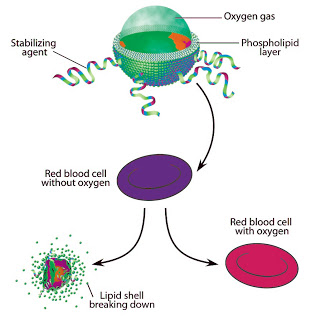

| Visitors Now: | |
| Total Visits: | |
| Total Stories: |

| Story Views | |
| Now: | |
| Last Hour: | |
| Last 24 Hours: | |
| Total: | |
Injectable oxygen
From
John Kheir, MD, a physician in the Cardiac Intensive Care Unit at Boston Children’s Hospital, led a team that created tiny particles filled with oxygen gas, which, when mixed with liquid, could be injected directly into the blood. In an emergency, IV oxygen delivery could potentially buy clinicians time to start life-saving therapies.
In 2012, the solution could completely saturate red blood cells in oxygen-deprived rabbits within seconds of injection, and they kept rabbits with totally blocked airways alive for 15 minutes using the oxygen-infused microparticles. “Essentially as soon as we started injecting it, clinically we started to see an effect,” Kheir told ScienceNOW.
Researchers are now testing the microparticle solution on large animals, and if those and later human clinical trials are successful.
The microparticle used to package oxygen gas, covered by a layer of fatty molecules and stabilizing agents. Upon contact with an oxygen-poor red blood cell, it releases oxygen, which rapidly binds to the cell. The lipid shell is metabolized by the body.
TEDMED – Welcoming Death into Life
See more and subscribe to NextBigFuture at
Source: http://nextbigfuture.com/2013/05/injectable-oxygen.html



